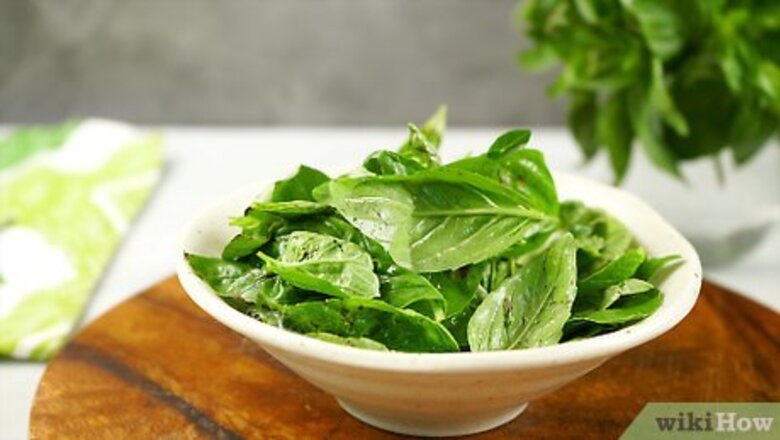
views
X
Research source
Blanched and Blended Basil Oil

Pick or buy fresh basil leaves. You'll need several handfuls of basil leaves to make 1 1/2 cups (30 grams) of packed fresh leaves. You can use basil fresh from your garden, from the supermarket, or from a local farmer's market. Basil comes in many varieties and you can use any of them to make basil oil. Sweet basil is the most common kind of basil in the United States. It's perfect for use in Italian dishes and soups. Sweet Thai basil is often used in Asian cooking; it is slightly spicier with hints of licorice and cloves. Lemon basil has hints of lemon along with the typical sweet basil flavors. Purple basil types, such as dark opal basil or purple ruffles basil, are also spicier than sweet basil.
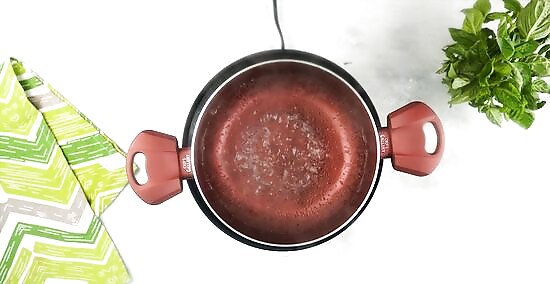
Bring a pot of water to boil. Grab a medium pot and fill it about halfway with water. Place the pot over high heat and bring the water to a boil.
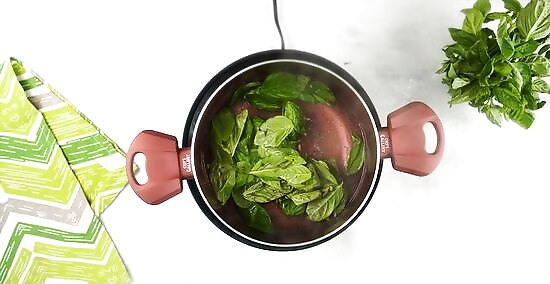
Add 1 1/2 cups (30 grams) of fresh basil to the boiling water. You can leave the basil leaves in the water for as little as 10 seconds or for up to 60 seconds. The longer you leave the basil in the water, the more limp the leaves will become. You may lose some of the flavor if you leave the basil in for too long. Quickly boiling fresh herbs is called blanching. Blanching helps the basil maintain its color.
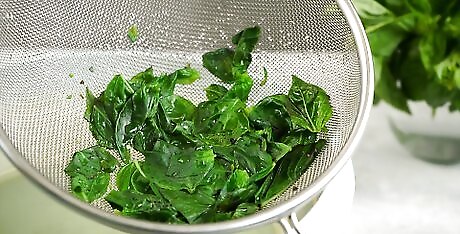
Place the basil leaves in a strainer. Dump the pot of water into a strainer, letting the water drain off. Run the leaves under cold water to stop the cooking process. Dump the leaves on a paper towel to dry. EXPERT TIP Sasha Reyes Sasha Reyes Executive Chef Chef Sasha Reyes is the Executive Chef and Owner of Artisan Personal Chefs. With over 20 years of food industry experience, she specializes in private dinner parties, custom sports nutrition plans for professional athletes, and cooking lessons. Chef Reyes graduated from Arizona Culinary Institute in 2011 with a degree in Culinary Arts, Baking, and Restaurant Management. Sasha Reyes Sasha Reyes Executive Chef Blanch then shock herbs for infused oil. To infuse olive oil with maximum basil flavor and color, first blanch leaves for 20-30 seconds, then immediately shock them in ice water to stop them from cooking more. Blanching sets the color and enriches flavor before steeping.
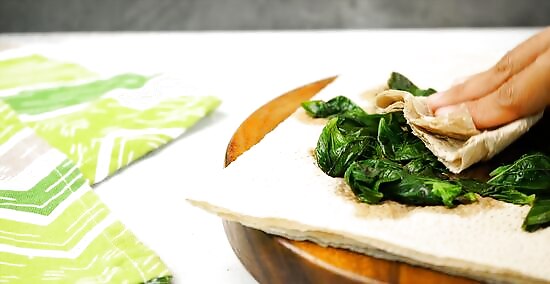
Pat the basil dry. Use paper towels and dab at the basil gently to absorb excess water. Do not squeeze or press the basil because you'll release too much of the flavor into the paper towels.
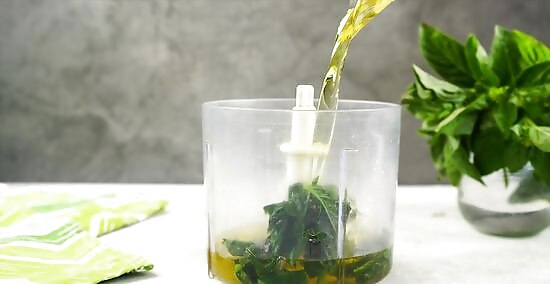
Add the basil and oil to a blender. Dump the leaves into a blender or food processor. Also add in the 3/4 cup (177 ml) of olive oil.
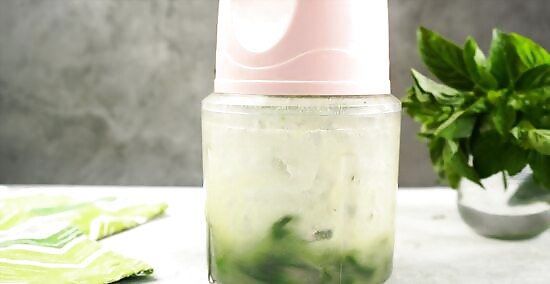
Blend the mixture until it's smooth. Set the blender or food processor to puree, and blend the mixture until the leaves are smoothly incorporated into the oil.

Transfer the oil to a sanitized airtight container. If you won't be able to eat all of the oil immediately, put the leftovers in an airtight container. To prevent botulism, it's a good idea to sanitize your container and lid first. All you have to do is boil the container and lid in a pot of water for 10 minutes to kill any bacteria.

Store the oil in the fridge and use it within 2-4 days. If you don't use the basil oil immediately, keep it in the refrigerator in an airtight container and throw it out after 4 days. If you store the oil for longer than 4 days, a harmful bacteria may begin growing inside of it. This bacteria can lead to a potentially fatal form of food poisoning called botulism. To prevent botulism poisoning, never store your oil at room temperature.
Blended and Heated Basil Oil
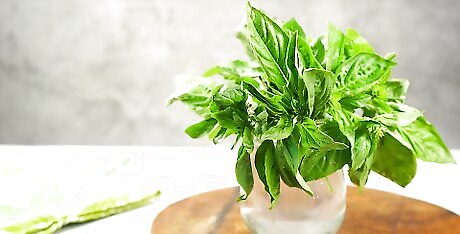
Choose a fresh bunch of basil. Look for bright, green leaves without brown spots. You can purchase your basil or pick it from your garden. Remove the leaves from the stems, discarding the stems. This method tends to bring out a stronger flavor in the oil, as the basil is cooked in the oil rather than in the water.
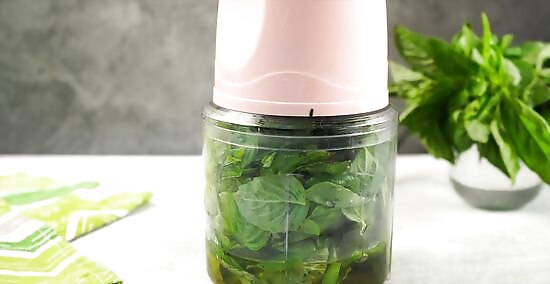
Add the basil and oil to a blender. In a blender or food processor, pour in 1 cup (236 ml) of oil, and add the bunch of basil leaves. Blend the mixture until you have made it smooth.

Heat a small skillet. Place a small skillet on the stove, and turn it to medium to medium-high heat.
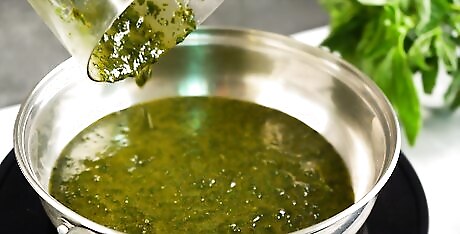
Add the basil oil. Pour the basil oil into the skillet, and let it heat for about 3 minutes. Take the pan off the heat. Do not let the oil boil. It should stay at a light simmer, so turn down the heat if the oil is getting too hot.

Strain the oil into an airtight container. Place a fine mesh strainer over an airtight container with its lid off. Pour the oil through the strainer. Don't push on the pulp, as it can make it fall through the strainer. Gently shake or tap the strainer to help the oil through. To prevent botulism, sanitize your airtight containers and lids first. Sanitizing is easy! Put the containers and lids in a pot of water and boil them for 10 minutes to kill any bacteria.

Store the oil in the fridge and use it in 2-4 days. Place the oil in the refrigerator immediately to keep it fresh. Harmful bacteria may begin growing in herb-infused oil after 2-4 days, even if it's properly stored in the fridge. It's crucial that you throw out your oil after a few days to prevent the risk of botulism. Never store herb-infused oils at room temperature! This could lead to botulism poisoning which can be fatal.
Using Basil Olive Oil

Top toast with it. Cut up fresh French bread into slices. Toast it in the oven or on the grill, and then drizzle the basil olive oil over it.

Create stacked caprese salad. Layer tomato slices and fresh mozzarella slices together. Drizzle the oil over the top and a light sprinkling of salt for a simple caprese salad.

Make it a soup topping. Whether your eating tomato soup, gazpacho, or Italian wedding soup, basil oil makes a delicious topping for any Italian-themed soup. Just drizzle a little on top right before serving.

Try it on an open-faced sandwich. Make a traditional open-face breakfast sandwich with bacon and eggs. Pour a little oil over the top for added flavor. It also works well with other sandwiches, such as turkey and gouda.

Toss with vegetables. Steam your vegetables as usual. Pour in a little basil oil, and toss the vegetables until the oil coats them. Sprinkle salt over the top.



















Comments
0 comment